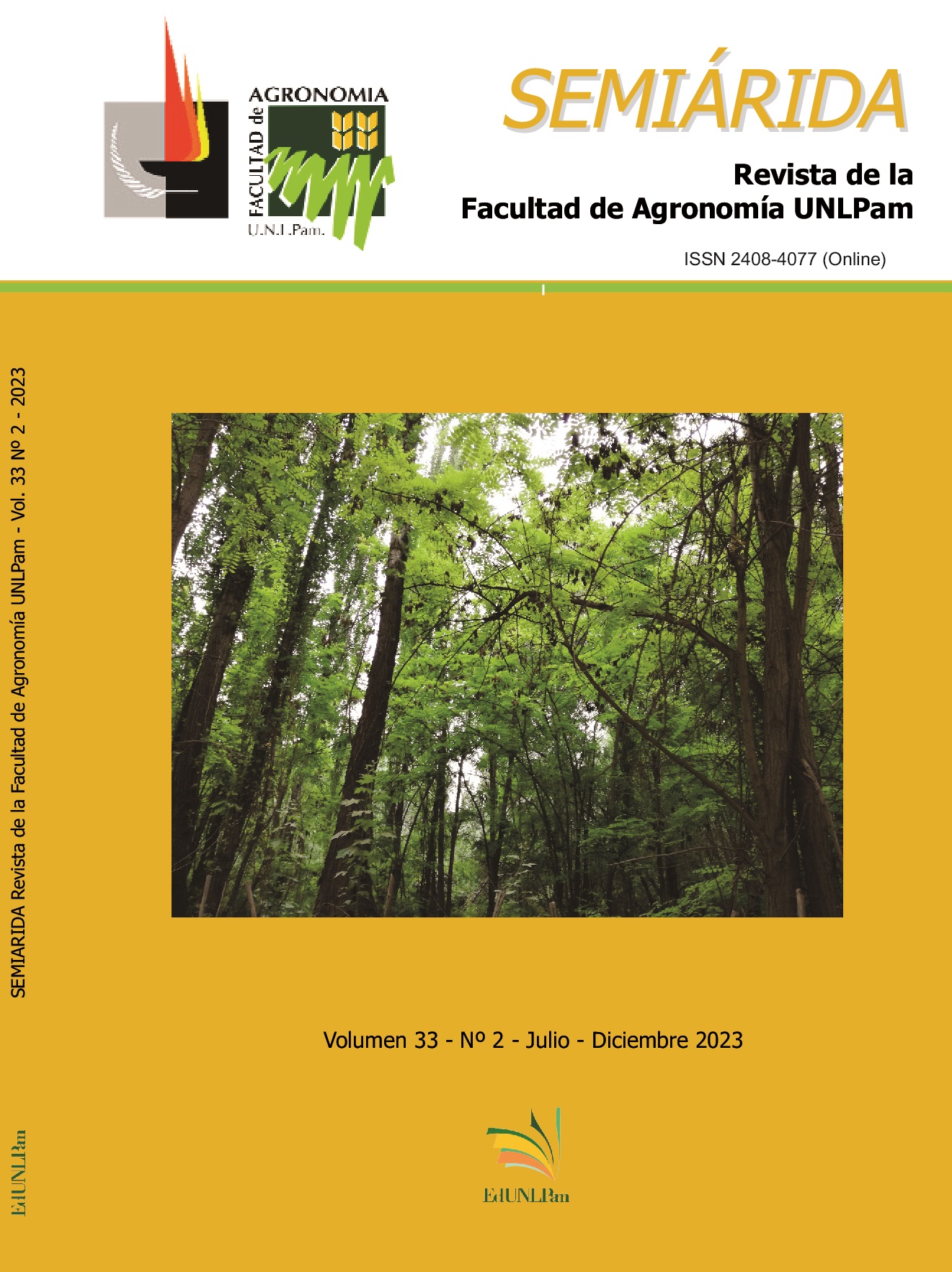View Item
- xmlui.general.dspace_homeCentros Regionales y EEAsCentro Regional Patagonia NorteEEA Alto ValleArtículos científicosxmlui.ArtifactBrowser.ItemViewer.trail
- DSpace Home
- Centros Regionales y EEAs
- Centro Regional Patagonia Norte
- EEA Alto Valle
- Artículos científicos
- View Item
Robinia pseudoacacia, una alternativa silvícola para el Alto Valle de Río Negro (Argentina). Parte I: aspectos botánicos y ecológicos
Abstract
En la Argentina, el cultivo comercial de Robinia pseudoacacia es reducido y existen pocosbestudios sobre su comportamiento en plantación forestal. Las investigaciones forestales en el AltoValle han sido principalmente orientadas al cultivo de “álamos” y “sauces” (Salicaceae), sin registrosbsobre el cultivo de R. pseudoacacia. Debido a la escasez de antecedentes en la región, el objetivo debesta revisión es integrar diferentes aspectos botánicos y
[ver mas...]
En la Argentina, el cultivo comercial de Robinia pseudoacacia es reducido y existen pocosbestudios sobre su comportamiento en plantación forestal. Las investigaciones forestales en el AltoValle han sido principalmente orientadas al cultivo de “álamos” y “sauces” (Salicaceae), sin registrosbsobre el cultivo de R. pseudoacacia. Debido a la escasez de antecedentes en la región, el objetivo debesta revisión es integrar diferentes aspectos botánicos y ecológicos de R. pseudoacacia con el fin de evaluar la factibilidad como alternativa silvícola en el Alto Valle de Río Negro. Se realizó una revisión bibliográfica sobre aspectos botánicos y ecológicos de la especie como así también estudios a campo a nivel local. Se incluyen aspectos sobre la nomenclatura, taxonomía, distribución, hábitat y ecología de la especie. Robinia pseudoacacia presenta plasticidad y está adaptada a las condiciones agroecológicas de la región, por lo que su cultivo es factible. Se espera describir, en próximas contribuciones, aspectos del tipo dasonómico-productivos que complementen la presente revisión.
[Cerrar]
In Argentina, the cultivation of Robinia pseudoacacia is uncommon, and there are few studies on its behavior in forest plantations. Forestry research in the Alto Valle has been mainly oriented to the commercial cultivation of “poplars” and “willows” (Salicaceae) and there are not any records on the cultivation of R. pseudoacacia. Due to thelack of information on the cultivation of this species in the region, this review aims to integrate
[ver mas...]
In Argentina, the cultivation of Robinia pseudoacacia is uncommon, and there are few studies on its behavior in forest plantations. Forestry research in the Alto Valle has been mainly oriented to the commercial cultivation of “poplars” and “willows” (Salicaceae) and there are not any records on the cultivation of R. pseudoacacia. Due to thelack of information on the cultivation of this species in the region, this review aims to integrate differentbotanical and ecological aspects of R. pseudoacacia to evaluate its feasibility as a silvicultural alternative in the Alto Valle de Río Negro. A bibliographical review of botanical and ecological aspects of the species was carried out, as well as local field studies. Information on the nomenclature, taxonomy, distribution, habitat, and ecology of the species is included. Robinia pseudoacacia presents plasticity and is adapted to the agro-ecological conditions of the region, so its cultivation is feasible. We expect to describe, in future contributions, aspects of the forestry-productive type that complement this review.
[Cerrar]

Author
Jocou, Adriel Ian;
Minué, Carlos Rogelio;
Fuente
Semiárida : Revista de la Facultad de Agronomía, Universidad Nacional de La Pampa 33 (2) : 5-17 (2023)
Date
2023-12-20
Editorial
Facultad de Agronomía, Universidad Nacional de La Pampa
ISSN
2408-4077
Formato
pdf
Tipo de documento
artículo
Palabras Claves
Derechos de acceso
Abierto
 Excepto donde se diga explicitamente, este item se publica bajo la siguiente descripción: Creative Commons Attribution-NonCommercial-ShareAlike 2.5 Unported (CC BY-NC-SA 2.5)
Excepto donde se diga explicitamente, este item se publica bajo la siguiente descripción: Creative Commons Attribution-NonCommercial-ShareAlike 2.5 Unported (CC BY-NC-SA 2.5)


